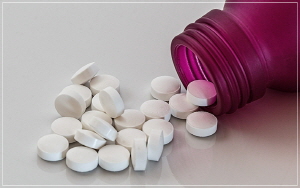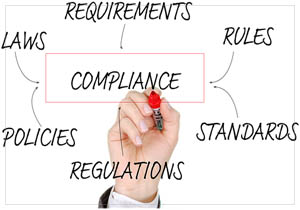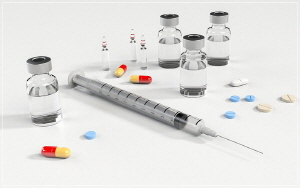ISO 15378
Primary packaging materials for medicinal products
The requirements of ISO 9001 and the requirements of GMP (Good Manufacturing Practice) must be applied. The requirements is integrated with GMP principles for design, manufacture and supply and quality management systems. The realization of GMP principles in the management of primary packaging within an organization is very important for the safety of patients using pharmaceuticals that come in direct contact with the materials.
In order to obtain ISO 15378:2017 certification, the following must be complied.
- Compliance with legal regulations
- Identification, reduction and control of risks, including contamination and manufacturing errors
- Approach for effective monitoring of the system
- Provide continuous improvement for overall products and processes
-
-

-
ISO 15378:2017 Requirements
The ISO 15378:2017 consists of the same 10 high-level structures, and must consistently meet the requirements of the clients including the requirements of the relevant standards and international standards. The ISO 15378:2017 consists of 10 chapters and 4 appendices. Manufacturers who understand and implement the quality management system can also obtain ISO 15378 certification through understanding and reflection of additional requirements.
- 1. Scope
- 2. Normative References
- 3. Terms and definitions
- 4. Context of the Organization
- 5. Leadership
- 6. Planning
- 7. Support
- 8. Operation
- 9. Performance Evaluation
- 10. Improvement
Following are the additional requirements of ISO 15378:2017.
4.3 Determining the scope of the quality management system : The document must be signed and, if necessary, designated as a security document, and must be identified.
4.4 A record of important process should be double checked.
5.2 It should accept the an audit client wants and meet the requirements.
5.5 Maintain a signed list of employees and emphasize the independence of the quality department.
5.5.3 In internal communication, legal matters must be included and important quality situations must be communicated in a timely manner.
5.8.3 At the management review meeting, the effectiveness of education and training should be grasped.
6.2 GMP training was emphasized.
6.4 Criteria for clean room and work environment must be established, and pollution control, pest control, utility, and maintenance activities must be described.
7.1 A risk assessment must be conducted.
7.2 Any changes to the product must be notified and client requirements for disposal of discarded packaging materials must be documented.
7.2.3 Clients should also be notified of product problems that have not yet been discovered.
7.3 Risk assessment should also be carried out in the design and development stages, and clients should be notified of any design changes.
7.4 Outsourced companies should be managed, and especially those conducting experiments should evaluate their capabilities. The quality department's approval is required for key supplies.
7.5.1 The date of manufacturing must be managed and the production environmental conditions must be approved by the client. Containers and filling and packaging lines should be identified, and reprocessed materials also require client's approval. Line checks for the next work should be performed, and change management procedures should be established.
7.5.2 The validity of the product process must be checked and performed, and if there are any changes, the validity must be checked again. In addition, this validity should be managed as a record, and data such as a results of function test when using the software and accuracy should be maintained.
7.5.3 It must be possible to identify and track products in the production process including important process data.
7.5.5 The retention period and storage conditions must be specified.
7.6 The load of automatic inspection equipment must be tested, production data must be provided upon customer request, and critical measuring equipment must be calibrated.
8.2.4 Records of deviation and warehousing inspection, process inspection, final inspection, and stored products must be managed.
8.3 The risk of reworked products must be evaluated, and the quality department must approve the rework, and nonconformity must be managed under client's approval.
8.5.2 Corrective action should be carried out as quickly as possible within a specific schedule.* Scope 1. If it is necessary to demonstrate the organization's ability to provide primary packaging for medicinal products, the requirements for the quality management system should be specified.
2. This standard is applied to the design, manufacture and supply of primary packaging materials for medicinal products, and this standard can also be used for certification purposes.
3. All requirements of this standard are general, developed to be applicable to all organizations regardless of product, and if the requirements of the standard cannot be applied to the organization and product, its provisions can be excluded.* Additional requirements except ISO 9001:2015 The ISO 15378:2017 consists of 10 chapters and 4 appendices. Manufacturers who understand and implement the quality management system can also obtain ISO 15378 certification through understanding and reflection of additional requirements.
-
-
-

-
ISO The importance of ISO 15378
Certification for primary packaging materials that apply the requirements of GMP and quality management systems is recognized worldwide. Primary packaging materials in direct contact with medicinal products is especially important. Because It is directly related to the health of people or animals using pharmaceuticals.
The advantages of ISO 15378 certification are as follows :- 1. It can reduce costs by minimizing contamination, mixing and manufacturing errors and waste in manufacturing and improving productivity.
- 2. By providing guidance on risk management and validation, you can mitigate the risks identified as contamination in your products, and ensure product efficacy and shelf life.
- 3. By complying with GMP requirements in accordance with the ISO 15378:2017, you can improve your production process proficiency.
- 4. By producing products in compliance with the requirements of the quality management system and GMP requirements, high-quality products are guaranteed and this can lead to improved clients' satisfaction, and can establish optimized quality management system requirements.
- 5. It can help protect your brand by enhancing your organization's value with key stakeholders and ensure the quality and stability of your organization.
- 6. It helps organizations effectively manage risk by helping organizations identify, control and manage risks throughout the ISO 15378 audit process.
-
-
-

-
IGC’s Competency
- 1. IGC has been accredited for ISO 13485 by IAS, an Accreditation Body in the United States, and provides certification services for quality management systems.
- 2. The auditors of IGC are contributing to the continuous development of customers by accurately assessing the suitability of the medical device quality management system through the technology and expertise accumulated over the years.
- 3. As a trusted global leader in management system certification, IGC offers ISO 9001 and ISO 13485 certification as well as environmental management and other management systems.
- 4. IGC has up-to-date knowledge of a wide range of specific scopes and legal requirements in major markets around the world, and provides the knowledge and services to support your entire global operation.
-
Related Services from IGC
